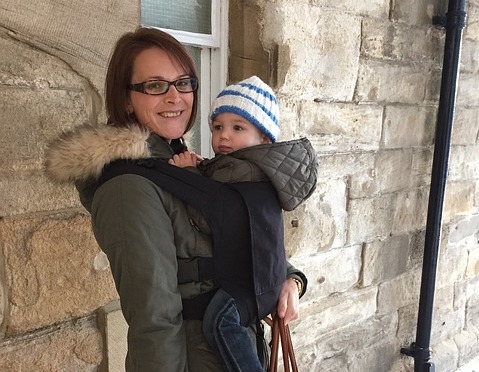 A Continued Tradition of Babywearing
A Continued Tradition of Babywearing
Wearing your baby is the practice of carrying your baby in a carrier such as a sling or soft sided carrier. Although new to many, mothers have been baby wearing around the globe for centuries. And no wonder. The benefits for the child can be significant:
- Provides transition from the calm womb to the outside world.
- Babies that are carried more tend to cry less.
- Physical contact improves bonding with parents.
- Special needs or low birth weight infants develop more quickly.
- Babies have the reassurance of hearing their mothers’ heartbeats.
- Being rocked by their mother’s movement helps their own systems.
- Babies exhibit an enhanced visual and auditory alertness.
If that’s not enough, mothers benefit too:
- More in tune with the physical and psychological needs of the baby.
- Helps create a more confident parenting experience.
- Eye contact helps you more easily calm your baby if frightened.
- Easier to conduct your normal daily activities.
- Provides physical and emotional safety in crowded places.
Babywearing and Child Development
“I used a wearable carrier for both of my children,” smiles Dr. Kim Stetzel. “It allowed me to do a lot of different activities. Plus, I think it improved the bonding experience for all of us.”
Baby wearing allows for natural development of your baby’s skull, spine, and postural muscles. Babies who spend a lot of time in car seat type carriers often develop a squaring of the cranium.
“Too much time in car seat type carriers aren’t very good for mothers or babies,” continued Dr. Stetzel. “Not only are babies in a restricted position, there’s considerably less emotional connection. Plus, they are awkward and bulky for Mom to carry at a time when her core is still recovering from pregnancy and delivery.”
Proper Babywearing Positions
You should carry a younger infant in front of you, with the baby facing you. When the baby is facing forward it shifts the center of gravity, affecting the mother’s spine. Look for a carrier that attaches around your waist for the best support.
The back of the carrier should come up to the head in infants who cannot support their head on their own. As the baby develops the ability to support its own head, the carrier should come up to the top of their back.
It’s important for the baby’s legs to be in the proper position as well. The fabric at the base of the carrier should go from knee to knee and the baby’s knees should be higher than its hips so as not to put undue stress on the developing hip joints.
Learn how to get your baby in and out of your wearable carrier safely and confidently. Practice with a spotter and work with a doll, over a bed or some other soft surface.
“Once the baby can sit up on their own unsupported, the child can be carried on your back so they can look around more,” suggests Dr. Stetzel.
Learn More
Do you have questions or concerns about the structural or neurological development of your baby? Contact Dr. Stetzel at Branchville Family Chiropractic. You’ll find our information-rich environment supportive and encouraging.
